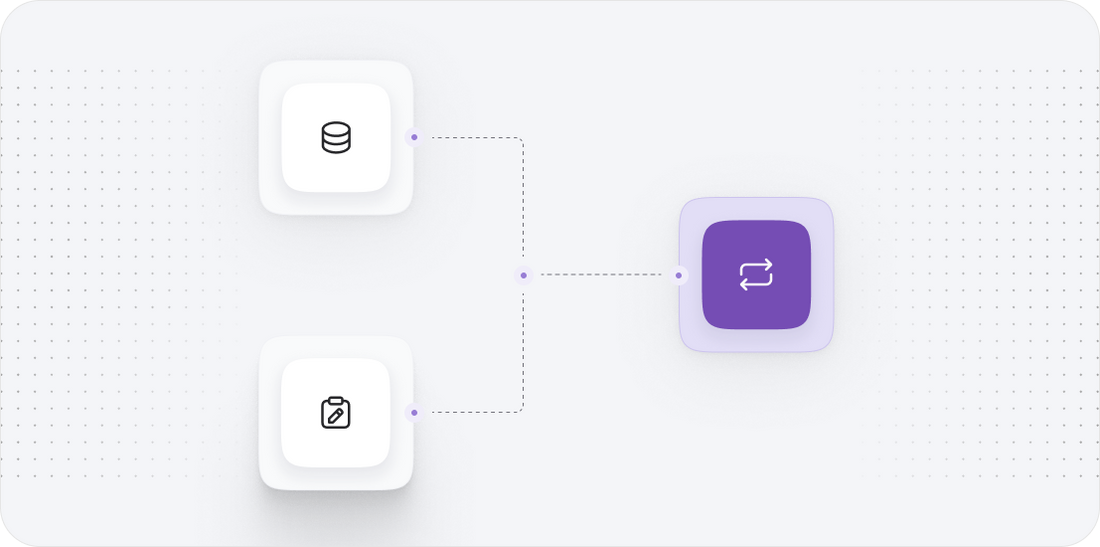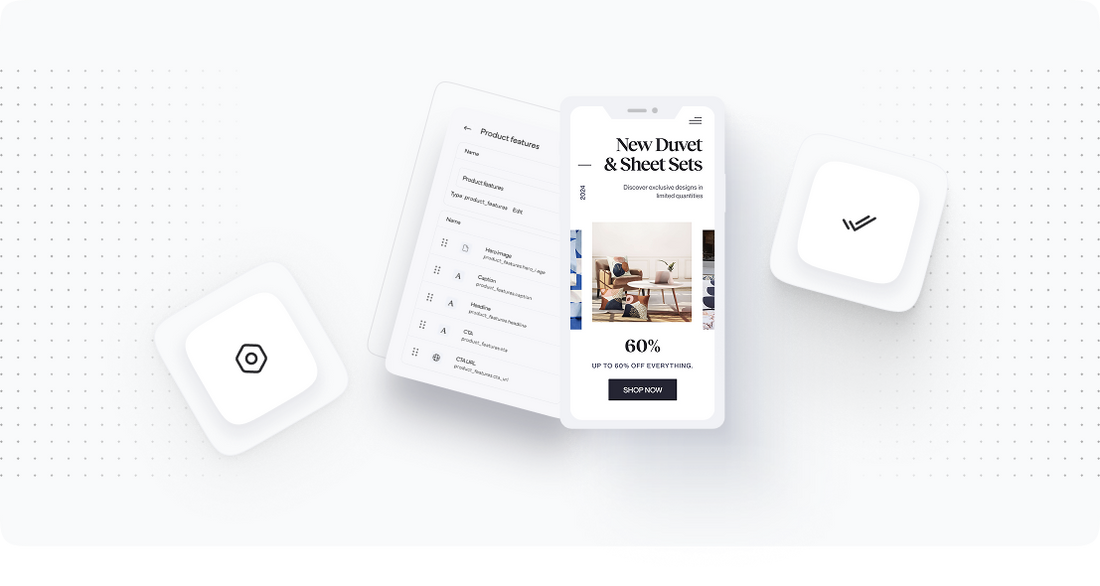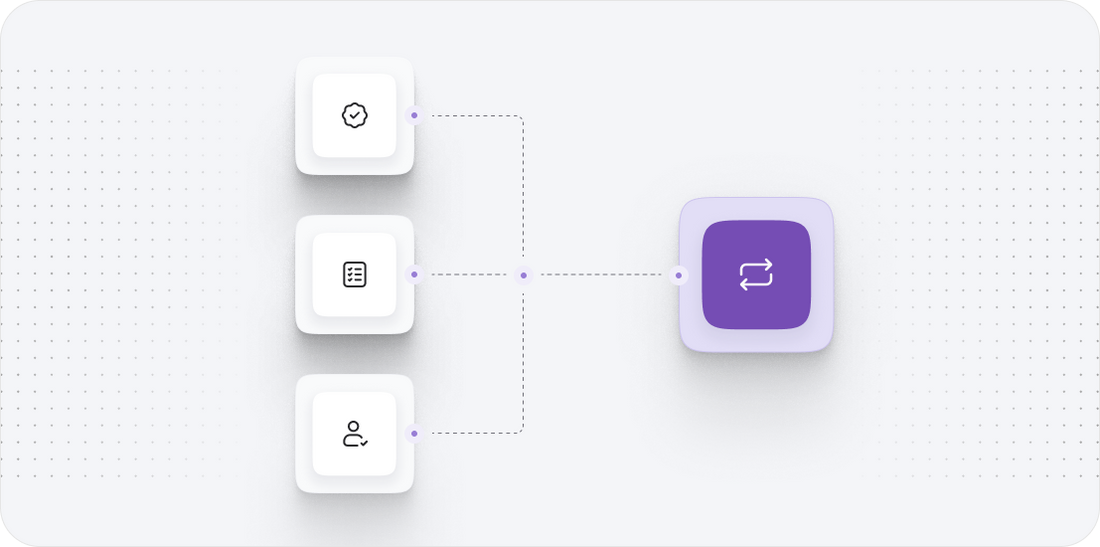





Salesforce commerce cloud to Unas
Migrating your store from Salesforce commerce cloud to Unas might seem daunting, but with proper planning and the right tools, it's a smooth process. Follow this step-by-step guide to ensure a successful transition.
Schedule a call
Step-by-Step Migration Guide: Salesforce Commerce Cloud to Unas Migration Guide
Step 1: Pre-Migration Assessment and Planning
In this initial step, we will evaluate your current Salesforce Commerce Cloud setup and define the migration strategy to Unas, ensuring that all requirements are met for a smooth transition.
Step 2: Data Backup and Preparation
This step focuses on securely backing up all data from Salesforce Commerce Cloud, preparing it for migration to Unas, and ensuring that no data is lost during the transition.
Step 3: Data Mapping and Transformation
In this step, we will create a comprehensive data mapping document that outlines how data from SFCC will be transformed and imported into Unas.
Step 4: Migration Execution
In this step, we will execute the actual migration of data from Salesforce Commerce Cloud to Unas using the mapping document as our guide.
Step 5: Quality Assurance and Testing
In this step, we will perform rigorous testing to ensure that all data has been migrated accurately and that the Unas platform operates as expected.
Step 6: Go-Live and Post-Migration Support
In this final step, we will launch the Unas platform and provide ongoing support to address any issues that arise after going live.
Power Your Step - Get in Touch
Ready to take your ecommerce to the next level? Contact PowerCommerce today for expert migration support.
Step 1: Pre-Migration Assessment and Planning
Before initiating the migration from Salesforce Commerce Cloud (SFCC) to Unas, a thorough pre-migration assessment is essential. This phase involves gathering critical information regarding your existing ecommerce setup, identifying potential challenges, and mapping out a strategic approach for the migration process.
The primary objective of this step is to create a comprehensive migration plan that outlines all necessary actions, timelines, and responsibilities. By conducting a detailed assessment, we can identify areas that require special attention, such as data integrity, system compatibility, and functional requirements, ensuring a seamless transition.
We begin by reviewing your current ecommerce structure, including:
- Data Inventory: Catalog all the data types that need to be migrated, including product information, customer data, order histories, and payment settings.
- Functional Requirements: Identify features and functionalities used in SFCC that need to be replicated or enhanced in Unas.
- Integration Points: Determine how existing integrations (e.g., third-party applications, payment gateways) will be handled post-migration.
Once we have gathered all pertinent data, we can formulate a migration strategy that includes:
- Setting migration timelines and milestones.
- Assigning roles and responsibilities within your team.
- Defining success criteria to measure the effectiveness of the migration.
Finally, it’s crucial to communicate the migration plan to all stakeholders, ensuring everyone is aligned and aware of their roles throughout the process.

Step 2: Data Backup and Preparation
The next critical step in the migration process is to conduct a comprehensive data backup. This serves as a safety net, ensuring that all relevant data is preserved before initiating the transfer to Unas. This step not only protects against potential data loss but also aids in maintaining data integrity throughout the migration process.
To execute a successful backup, we follow these procedures:
- Identify Data to Back Up: Determine the specific datasets that need to be backed up, including:
- Product Catalogs
- Customer Information
- Order Histories
- Payment and Shipping Settings
- Choose Backup Method: Utilize SFCC's built-in backup tools or third-party solutions to extract data. Preferred methods include:
- Exporting data to CSV files for structured datasets.
- Utilizing the Data Export feature in SFCC for bulk data extraction.
- Execute the Backup: Perform the actual data export. Ensure that the data is saved in secure storage, preferably off-site or cloud-based, to prevent any loss.
- Verify Data Integrity: After the backup is complete, it is vital to verify that all data has been accurately captured. This includes checking for completeness and consistency across all datasets.
By completing this backup process, we set a solid foundation for the subsequent migration steps, ensuring that we can revert to the original state if necessary.

Step 3: Data Mapping and Transformation
Data mapping is a crucial part of the migration process, as it defines how the data from Salesforce Commerce Cloud (SFCC) will correspond to the fields and structures within Unas. This step ensures that all relevant data is accurately transferred and that relationships between data points are preserved.
To begin the data mapping process, we will:
- Analyze Current Data Structures: Review the existing data structures in SFCC, including how data is categorized and stored. This analysis helps us understand the complexities involved in the migration.
- Create a Mapping Document: Develop a comprehensive data mapping document that outlines:
- Source Fields: Identify fields from SFCC that will be exported.
- Target Fields: Define corresponding fields in Unas where this data will be imported.
- Transformation Rules: Specify any necessary transformations, such as changing data formats or merging fields.
- Engage Stakeholders: Collaborate with relevant stakeholders to review the mapping document, ensuring alignment with business needs and technical requirements.
This mapping document will serve as a reference throughout the migration process, providing clarity on how data will be transformed and integrated into Unas. Additionally, we recommend that the document be kept updated as changes are made during the migration to maintain accuracy.

Step 4: Migration Execution
With the preparation and planning phases complete, we can now proceed to the actual migration execution. This step involves transferring the mapped data from Salesforce Commerce Cloud (SFCC) to Unas, ensuring that all information is accurately imported and that the transition is as seamless as possible.
The migration execution process can be broken down into the following steps:
- Set Up the Unas Environment: Before executing the data migration, we ensure that the Unas environment is fully configured, including:
- Creating necessary product categories and attributes that match those in SFCC.
- Configuring payment gateways, shipping options, and other critical settings.
- Utilize Migration Tools: Select appropriate tools or scripts for the data migration process. Options include:
- Using Unas’s built-in data import tools.
- Leveraging third-party migration services or APIs if needed.
- Execute Data Migration: Import the data according to the mapping document. This includes:
- Running the migration scripts or tools to pull data from SFCC.
- Monitoring the process to catch any errors or discrepancies in real-time.
- Post-Migration Verification: Once the migration is complete, conduct a thorough verification of the data:
- Check for completeness and accuracy across all datasets.
- Test key functionalities, such as product display, customer accounts, and order processes.
By following these steps, we ensure that the migration is executed smoothly and that all data is transferred correctly, minimizing disruptions to your business operations.

Step 5: Quality Assurance and Testing
Quality assurance (QA) and testing are essential components of the migration process, ensuring that the data imported into Unas is accurate and that the platform functions correctly post-migration. This step aims to identify and rectify any issues before the platform goes live.
To effectively carry out QA and testing, we will follow these procedures:
- Define Testing Scenarios: Create a comprehensive list of scenarios to test, including:
- Product visibility and categorization.
- Customer account creation and login processes.
- Order processing and payment functionalities.
- Shipping and delivery options.
- Conduct Functional Testing: Run through each testing scenario to verify that:
- Data is displayed accurately on the frontend.
- All functionalities operate as intended without errors.
- User Acceptance Testing (UAT): Engage key stakeholders in UAT, allowing them to test the platform and provide feedback on its usability. This step includes:
- Gathering feedback from users regarding their experience.
- Making necessary adjustments based on user insights.
- Document Issues and Fixes: Track any issues encountered during testing, documenting the nature of the problem and the steps taken to resolve it.
Completing thorough QA and testing ensures that your Unas site is ready for launch, providing confidence in the accuracy and functionality of the migrated data.

Step 6: Go-Live and Post-Migration Support
The go-live phase marks the culmination of the migration project, as we transition from the Salesforce Commerce Cloud (SFCC) to the Unas platform. This step requires careful planning and execution to ensure a smooth launch and minimal disruption to operations.
Here’s how we will approach the go-live process:
- Final Pre-Launch Check: Conduct a last-minute review of the Unas platform to confirm that:
- All data has been correctly migrated.
- Functionalities are operational and tested.
- Configurations for payment and shipping are correctly set up.
- Launch the Unas Platform: Officially switch from SFCC to Unas, ensuring that:
- The domain is pointed to the new Unas site.
- Any necessary redirects from old URLs to the new ones are established.
- Post-Migration Support: After launch, provide ongoing support to address any immediate issues that arise. This includes:
- Monitoring the platform for performance issues.
- Addressing customer inquiries and troubleshooting problems as they occur.
- Gathering feedback from users to identify areas for improvement.
By ensuring a well-managed go-live process and providing post-migration support, we can help you maximize your new ecommerce platform's potential and ensure continued success.

Power Your Step - Get in Touch
Don't leave your migration to chance! At PowerCommerce, we specialize in seamless migrations from Salesforce Commerce Cloud to Unas, ensuring that your business experiences minimal downtime and maximum efficiency. Our dedicated team is ready to guide you every step of the way.
To get started, simply reach out to us:
- Visit our contact page to fill out the inquiry form.
- Call us at 800-099-9090 for immediate assistance.
- Email us at info@powercommerce.com with any questions or to schedule a consultation.
Let us help you power your ecommerce journey!

Stay aligned on what's happening in the commerce world
Trusted by 1000+ innovative companies worldwide
Schedule Your Migration Today
For businesses prioritizing simplicity, scalability, and robust support, Shopify is the clear winner.
Looking to migrate without hassle? Power Commerce can handle the entire process, ensuring smooth data transfer, store setup, and post-launch success.
Marka Marulića 2, Sarajevo, 71000 BiH
00387 60 345 5801
info@powercommerce.com


